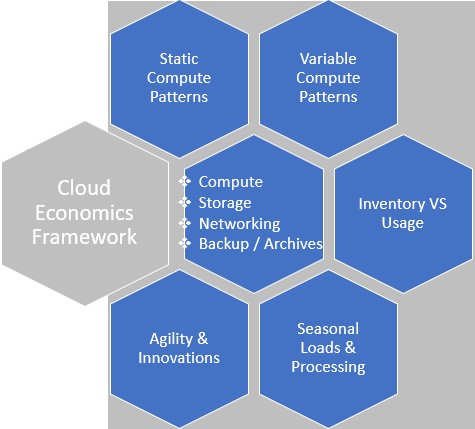The COVID-19 pandemic has posed a challenge for industries across the globe to sustain their business by taking measures to reduce the cost of operations and adopting new business models to maintain revenues and profits intact. It has driven every line of business to evolve an online business model and prioritize the focus towards adapting online business trades. This change of business model has forced the organization to revisit its business vision and future strategies to keep them aligned to the need of end-users around their services. In today’s changing world, the latest technology trends are big-time influencing the human’s way of living, and thus the pressure on the services providers increases to go more and more digital. Customers are focusing to re-define their legacy system’s modernization projects fast track with a very high priority. The public cloud has proven itself as a suitable option to move workloads on the cloud, modernize legacy applications at a faster pace and reduce CAPEX eventually with the increased profits gains. Cloud Economics is the way to do it much efficiently and easily and simultaneously guiding CIO / CXO’s to a powerful business plan, explaining what it means for their landscape.

Cloud economics framework is mainly defined on cost factors of platform pillars i.e. Compute, Storage, Networking, Backup & Archival of data. This framework defines the principles to identify patterns of computing which has a direct impact on operating cost i.e.
- Static Compute
- Variable Compute
- Hybrid Compute
- Inventory Vs Usage
- Agile & Innovations
This is where the IT partners of these organizations have a big role to play and help their customers to guide the economics of the Cloud. Here is my view on Cloud Economics Framework, its pillars, and focus areas, and how it can help our customers to reduce Opex, increase Capex and release changes faster to the market:
Static Compute
These are workloads in our customer landscape that are required to be run consistently and cannot be stopped for example production environments, staging environments, etc. categorized as static computes. Cloud Economics framework will have factors to right-size these workloads with a one-to-one mapping of on-premise environments and identify areas of optimizations.
Variable Compute
Workloads running part of the environments required on a need basis for example in dev, non-prod environments, functional, and performance testing environments. Cloud Economics framework provides a well-defined methodology and approach to categorize workloads as variable environments. Once workloads are identified then it is parametrized to bring the cost optimization and agility around this topic.
Hybrid Compute
Hybrid Compute is another compute pattern that is a combination of static & variable compute. It takes one of the models i.e. static or variable as its base and then scales the environments vertically or horizontally for a short period but plays an important role during the capacity planning strategies of a customer environment.
Inventory vs Usage
Derived from the facts that how much compute capacity in the existing environment is used vs total compute capacity available per server/workload. It is one of the areas of revenue leakage and opportunity for cost optimization during cloud migrations. It would require a good analysis about identifying less utilized capacity workloads and categorizing them in this category. It is very important to be aware of the fact that if any server has the computing capacity allocated to it, then there are some valid reasons driving this decision. For example, it might be the case of the scheduled execution of certain programs requiring it or sessional load demands, etc. There are high chances that at the time of analysis these factors might not be active, and the results are shown by compute matrices collected is not accurate to make the right decision. The cloud economics framework is defined by keeping all these factors in consideration and helps organizations with algorithms to assess these patterns.
Agile & Innovations
Cloud economics framework is not only helping cost optimization but help organizations defining the right size as a service means having required to compute to run innovative systems like Artificial Intelligence and Machine Learnings. These systems help customers further innovate and being aligned with the latest business models and reducing their technical debt as well.
CIO / CTOs have more on their plate than usual days like optimizing their operations costs, control their shrinking CAPEX budgets, and finding out ways to solve their business problems. Changing business trends are deriving more towards new technology solutions like cloud deployments, AI / ML, and IoT Edge solutions. This article addresses the solution approach through cloud economics framework for customers choosing cloud deployments as their solution approach as of today.

 English | EN
English | EN 
